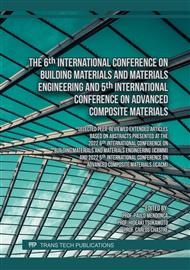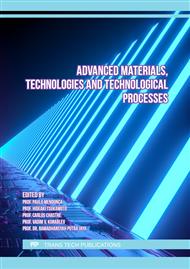p.123
p.129
p.137
p.165
p.173
p.181
p.187
p.193
p.201
Numerical Investigation of Sectional Buckling Behaviors of Cold-Rolled Aluminium Alloy Channel Columns
Abstract:
Cold-rolled aluminium sections can be seen as the new products and are manufactured by using the existing rolling system for cold-formed steel sections. These new sections have illustrated their advantages in comparison with the extruded aluminium sections. The buckling behaviors of cold-rolled aluminium sections are different from those of the extruded ones; and their behaviors have been illustrated to be significant impacts by geometric imperfections due to unavoidable reasons in manufacturing, transportation and assembly. The paper, therefore, investigates the sectional buckling behaviors of cold-rolled aluminium alloy channel columns with the consideration of the geometric imperfections in the analysis. The imperfection amplitudes used for the investigation are randomly selected based on the collected data from previous research studies. The investigated results are the base for the analysis of sectional buckling behaviors of cold-rolled aluminium alloy channel columns, and for the determination of detrimental strengths that can be used for further studies.
Info:
Periodical:
Pages:
173-180
Citation:
Online since:
March 2023
Authors:
Price:
Сopyright:
© 2023 Trans Tech Publications Ltd. All Rights Reserved
Share:
Citation:



